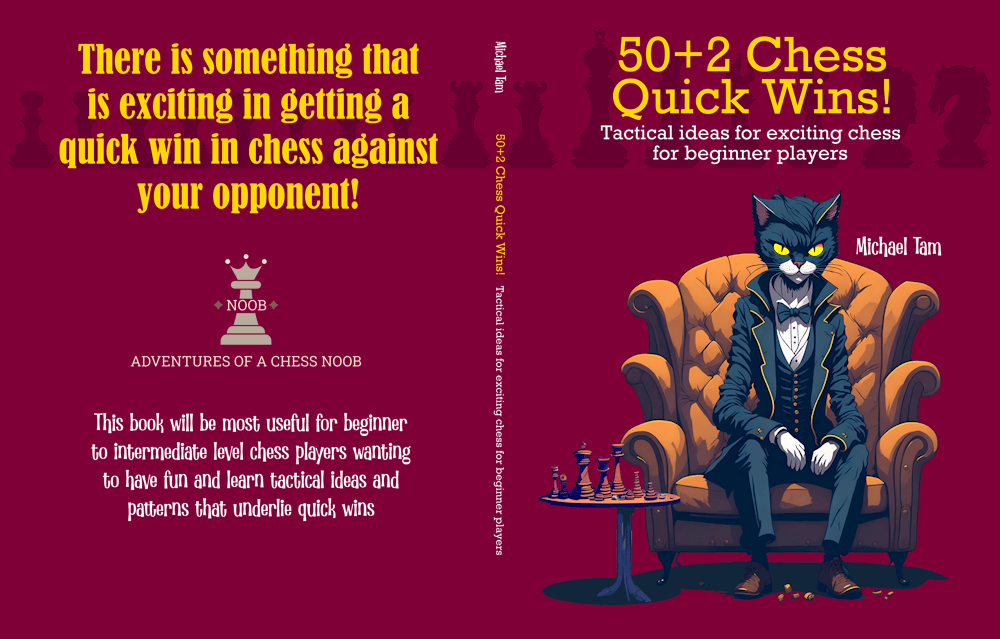
Leonhardt Gambit | MELT the Scandinavian Defense with this Queen Trap! 🦁💖♟️
#scandinavian #leonhardtgambit
There are many videos and articles in chess social media that recommends the Scandinavian Defense for beginners who are interested in trying something that is off the beaten path. And this is not bad advice! The Scandinavian is quite good and can catch a (1. e4) player off guard.
However, it isn’t the simplest system to play for Black and there are ways that White can respond, especially to the Main Line (Scandinavian Defense: Mieses-Kotrč) with Qa5 (1. e4 d5 2. exd5 Qxd5 3. Nc3 Qa5). My go to is the Leonhardt Gambit (4. b4!?) and after (4… Qxb4), to play the audacious queen trap line with the devious (5. Nb5!?).

![]()
A historical note:
Paul Saladin Leonhardt (1877-1934) was a German chess player and journalist who is not well known and did not play in many tournaments. However, he was a very strong player and, in his time, was recorded to have defeated some of the strongest players of the era, including Tarrasch, Tartakower, Nimzowitsch, Maróczy, Schlechter, and Réti. A true chess enthusiast, Leonhardt died of a heart attack while playing a game at the Königsberg chess club! 😲

The Leonhardt Gambit is named from (Leonhardt — Mieses, 1908, Prague) and after (4. b4 Qxb4), the “main line” is the surprising (5. Rb1)! This is the most accurate move, and not only is it often a surprising move for the player with the Black pieces, it is also surprisingly good and useful!
Interestingly, Leonhardt is not the first historical chess master recorded to have played the gambit in modern databases. Emanuel Lasker, the second world chess champion, played the line a few years earlier, (Lasker — Berg, 1905, USA), playing a simul during a USA tour!
![]()
In the massive LumbrasGigabase the first (successful) recorded instance of the queen trap line starting with (5. Nb5!?) is much more recently. And it achieved a glorious victory – a thirteen-move quick win in (Herbold — Mayer, 2002, Lampertheim, Germany). I too got a beautiful win capturing Black’s queen in the opening recently in another game of the Leonhardt Gambit!
![]()
For both lines in the Leonhardt Gambit, the Lichess community database demonstrates its practical effectiveness in casual games despite being suboptimal according to modern engine analysis. White has a commanding win advantage over Black, 56% vs 42%, which is excellent!
With (5. Nb5), White immediately attacks Black’s c7 square and threatens an absolute fork of the king and a8-rook. We are trying to bait Black to move their queen back to a5, a very natural square given that White is playing the Qa5-main line! This is required for the queen trap to work. However, in this game, Black played the second most common move, which is to defend the c7-square with (5… Na6). However, this is “okay” as we’ve won a concession from Black with the ugly developing of their knight to the edge of the board. To move forward, we need to acknowledge the trap is not available, bring the b5-knight back to c3, and continue the game with the generally good Leonhardt Gambit positions!
And this is what happened! As noted before, the “main line” in the Leonhardt Gambit is (5. Rb1), putting the rook on the semi-open b-file, and that this unexpected manoeuvre it’s surprisingly useful and good! When I played (8. Rb1), my rook attacked Black’s queen on the b-file, winning tempo, and pressures Black’s long-castled king!
We do some tense movements in the subsequent moves, a somewhat complicated position. Stockfish thinks that the most accurate options for both of was to trade down, but neither of us wanted to do this. With Black’s queen chased on the board, it appeared they won a second pawn with (11… Qxa2??), but it’s a blunder as the queen was trapped!
I didn’t see the best and most forcing sequence, which was (12. Nc3!), which not only attacks Black’s queen, but also leaves a single escape square (12… Qa5). However, this seeming respite is illusory as (13. Nc6+), a royal fork! 🤩
Nonetheless, I found a tricky move that was almost as good, (12. Nc6+)! I was hoping that Black would capture the knight (12… bxc6) and then (13. Nc3+)! The hero rook on b1 gives a discovered check as the knight move reveals the fully opened b-file, while the knight attacks the queen! 🤩
To Black’s credit, they saw this and instead moved their king out of check (12… Kc8?) and the amazing thing here is that Stockfish evaluates this as inaccurate [+3.1 → +6.1]! Under the engine’s cold-blooded analysis, Black’s best option was to trade their queen for White’s knight and rook! 😲
Although the position looks weird, White’s pieces are somehow safe and active! On the other hand, Black’s pieces are awkward, and their king exposed. As the middlegame progresses, Black’s king is forced back into the centre, and I win some material. On move 20, I found a tricky attack that began with (20. Rxc5!?). As I was already up on material, I didn’t mind trading one of my rooks for Black’s knight to simplify. And it worked! With the square vacated by my rook now available, I had (21. Bb5+), and then after Black moved their king (21. Ke7), I played (22. Nc6+), royal fork! 😄
With massive material disadvantage, Black played on for a short while. For me, the plan was simple – trade pieces if possible and simplify to an endgame. With (27. Ba3), I forced an exchange of bishops and soon after, Black resigned from the hopeless position. Good game, GG!
The big takeaway from this game is to consider trying the Leonhardt Gambit against the Qa5-main line of the Scandinavian Defense! It results in tactical games, is quite good in terms of win ratio, and is rather fun to play!



